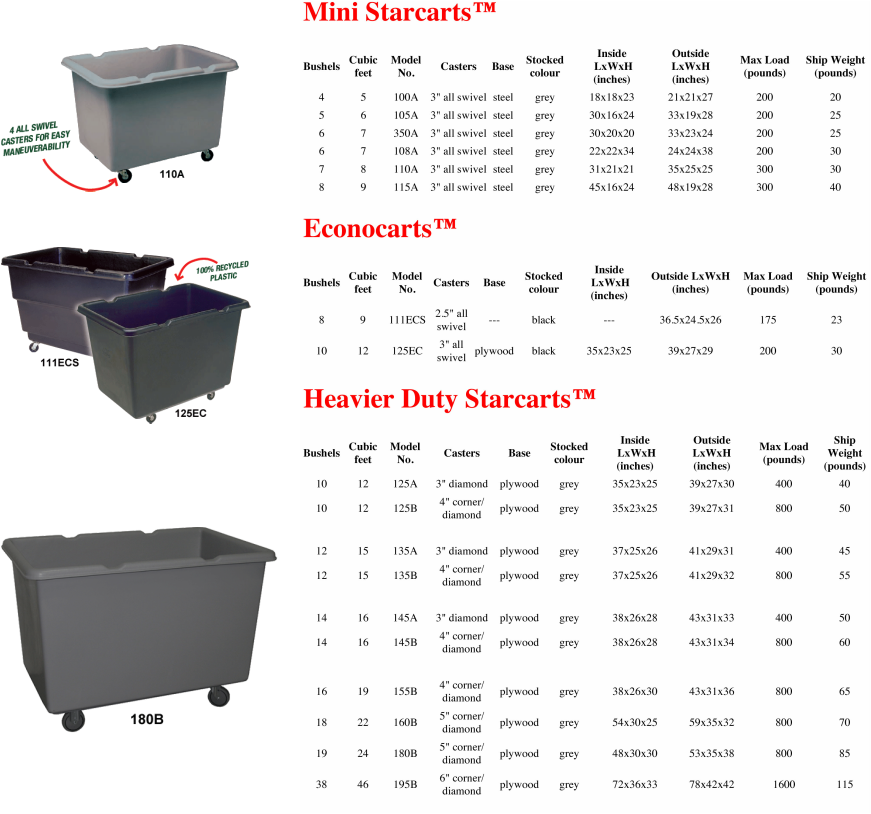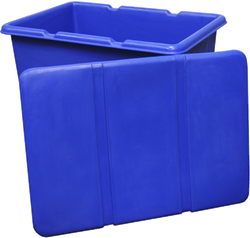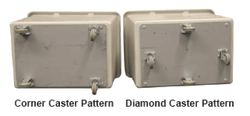* Please Contact Us for Current Pricing!
Starcart™ Utility Carts
Bushels? Why bushels?
The term bushels goes back hundreds of years for use in measuring grains and in the 20th century it became common to measure laundry in bushels. That term transferred to plastic utility trucks and is still commonly used today. A bushel is 2150 cubic inches or .035 cubic meters. Techstar has been manufacturing plastic carts since 1978.
Click here for Metric Conversion
Bushels? Why bushels?
The term bushels goes back hundreds of years for use in measuring grains and in the 20th century it became common to measure laundry in bushels. That term transferred to plastic utility trucks and is still commonly used today. A bushel is 2150 cubic inches or .035 cubic meters. Techstar has been manufacturing plastic carts since 1978.
Click here for Metric Conversion
a

Starcart™ Lids

Model 125L fits carts 125EC, 125A and 125B
Model 145L fits carts 145A, 145B and 155B
Model 145L fits carts 145A, 145B and 155B
Custom colours, bases, casters etc.
Choosing the Right Starcarts
1. Consider the material you want to move. Does it have size or volume restrictions for the inside of your cart? Compare these to the inside cart dimensions.
2. Measure areas this cart will travel, including doorways, hallways, elevators and spaces between machines. Compare these to the outside cart dimensions.
3. Consider what a full load would be and decide if it is practical for one person to push that much.
4. Although you may only be handling 300 pounds and certainly could use a cart with a 400 pound load rating, a cart with 800 pound capacity will roll easier (because it has larger wheels) and last longer (because it has thicker walls). In the long run this may be better value for you.
5. Do you have an application that would be advantageous to use an Easy Access Starcart allowing you to pile goods higher but still bend into the cart and reach the bottom to empty it? This makes great sense to maximize use of height.
6. Would a Spring Lift Platform be of value to you?
7. Check all floor surfaces for caster compatibility. Most of our casters are designed for concrete floors. If you have any concerns, please do not hesitate to call us. Bigger wheels roll easier. There are special wheel materials for carpet and outdoor use.
8. Consider the best caster pattern for your application. All swivel casters are best for tight areas but they do not travel long distances well. Diamond pattern turns easiest and travels long distances well. Corner pattern gives you the most stability for safety with heavy loads and travels long distances as well.
Choosing the Right Starcarts
1. Consider the material you want to move. Does it have size or volume restrictions for the inside of your cart? Compare these to the inside cart dimensions.
2. Measure areas this cart will travel, including doorways, hallways, elevators and spaces between machines. Compare these to the outside cart dimensions.
3. Consider what a full load would be and decide if it is practical for one person to push that much.
4. Although you may only be handling 300 pounds and certainly could use a cart with a 400 pound load rating, a cart with 800 pound capacity will roll easier (because it has larger wheels) and last longer (because it has thicker walls). In the long run this may be better value for you.
5. Do you have an application that would be advantageous to use an Easy Access Starcart allowing you to pile goods higher but still bend into the cart and reach the bottom to empty it? This makes great sense to maximize use of height.
6. Would a Spring Lift Platform be of value to you?
7. Check all floor surfaces for caster compatibility. Most of our casters are designed for concrete floors. If you have any concerns, please do not hesitate to call us. Bigger wheels roll easier. There are special wheel materials for carpet and outdoor use.
8. Consider the best caster pattern for your application. All swivel casters are best for tight areas but they do not travel long distances well. Diamond pattern turns easiest and travels long distances well. Corner pattern gives you the most stability for safety with heavy loads and travels long distances as well.

9. Colour coding is certainly possible for material identification needs. An example might be yellow for a spill kit.